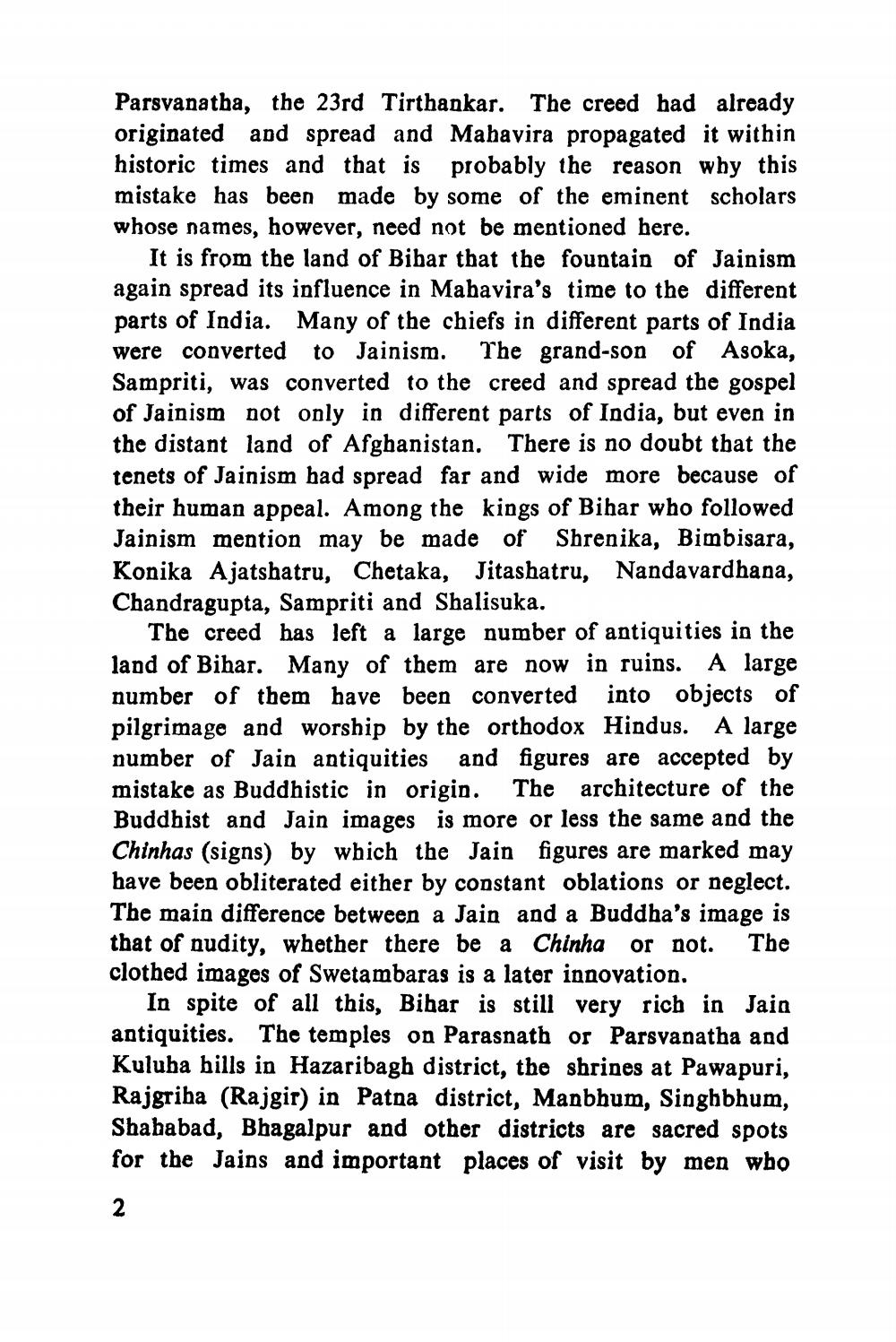________________
Parsvanatha, the 23rd Tirthankar. The creed had already originated and spread and Mahavira propagated it within historic times and that is probably the reason why this mistake has been made by some of the eminent scholars whose names, however, need not be mentioned here.
It is from the land of Bihar that the fountain of Jainism again spread its influence in Mahavira's time to the different parts of India. Many of the chiefs in different parts of India were converted to Jainism. The grand-son of Asoka, Sampriti, was converted to the creed and spread the gospel of Jainism not only in different parts of India, but even in the distant land of Afghanistan. There is no doubt that the tenets of Jainism had spread far and wide more because of their human appeal. Among the kings of Bihar who followed Jainism mention may be made of Shrenika, Bimbisara, Konika Ajatshatru, Chetaka, Jitashatru, Nandavardhana, Chandragupta, Sampriti and Shalisuka.
The creed has left a large number of antiquities in the land of Bihar. Many of them are now in ruins. A large number of them have been converted into objects of pilgrimage and worship by the orthodox Hindus. A large number of Jain antiquities and figures are accepted by mistake as Buddhistic in origin. The architecture of the Buddhist and Jain images is more or less the same and the Chinhas (signs) by which the Jain figures are marked may have been obliterated either by constant oblations or neglect. The main difference between a Jain and a Buddha's image is that of nudity, whether there be a Chinha or not. The clothed images of Swetambaras is a later innovation.
In spite of all this, Bihar is still very rich in Jain antiquities. The temples on Parasnath or Parsvanatha and Kuluha hills in Hazaribagh district, the shrines at Pawapuri, Rajgriha (Rajgir) in Patna district, Manbhum, Singhbhum, Shahabad, Bhagalpur and other districts are sacred spots for the Jains and important places of visit by men who
2




